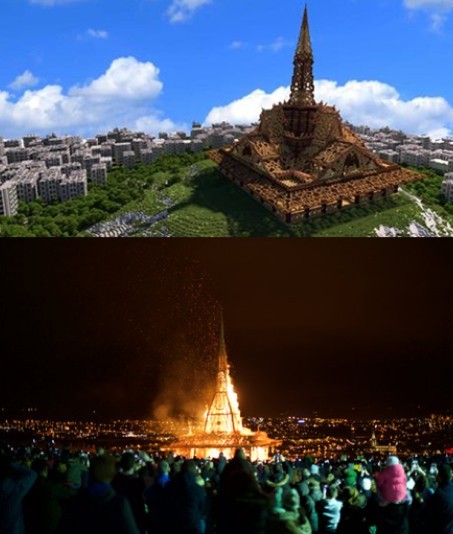 A bonfire in Northern Ireland is an event heavy with meaning. In recent times they’ve been as sectarian as most other things in life there: Loyalists tend to hold theirs in July, using them to commemorate the Orange victory and to burn the tricolor flag of the Irish Republic. The Republicans respond in kind in August by burning the Union Jack.
A bonfire in Northern Ireland is an event heavy with meaning. In recent times they’ve been as sectarian as most other things in life there: Loyalists tend to hold theirs in July, using them to commemorate the Orange victory and to burn the tricolor flag of the Irish Republic. The Republicans respond in kind in August by burning the Union Jack.
But as perhaps the most Celtic of the Celtic lands, Ireland and her bonfires far predate the modern Troubles. Great fires have always been lit there—rarely to divide people but most often to bring them together. They were lit at the darkest times, the fallow times, to banish danger and to summon courage amongst and for the tribes.
Though early and mid-winter were the traditional times for this (our jack-o-lanterns are an echo of it), it’s not inappropriate to light another such healing fire on the vernal equinox, when day and night reach parity, when winter seems behind us yet spring hasn’t quite bloomed. And it’s certainly appropriate in 2015′s Northern Ireland, when peace is closer than in generations, yet hardly permanently assured.
California artist David Best, who has built and immolated at Burning Man, chose Londonderry—a city on the River Foyle so divided that half of its residents insist on calling it simply ‘Derry’—as the site for his 72-foot high, intricately carved Temple of peace. It was an edifice with a predefined lifespan: construction began in January, and on March 21st it was burned to the ground.
intricately carved Temple of peace. It was an edifice with a predefined lifespan: construction began in January, and on March 21st it was burned to the ground.
For the week prior to the burn, the people of Londonderry were invited to tour the Temple, and to leave with it messages and mementos of their choosing. Thousands of pleas for peace were scrawled or carved into the wood. Pictures and postcards, even locks of hair were left. At least two people left ashes of the dead. By the end of that week more than half the population of Londonderry had  visited the Temple.
visited the Temple.
On the night of the fire 15,000 more of them turned up, to see the ancient sigil and to hope its message was being received as intended.
Spectacular though it was, it was in the end only a single fire, and by morning it was less than embers. It’d be optimism bordering on irrationality to think that just one Temple, and just one fire, could be catalysts for peace.
Unless it wasn’t just one—but rather just the first.